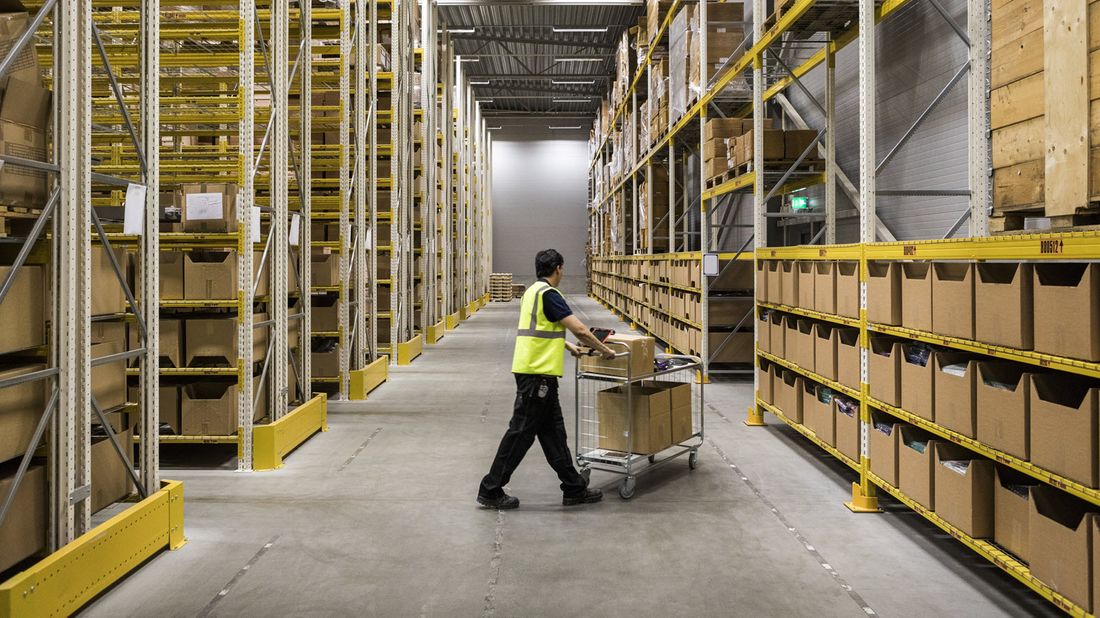Jobs Most Likely to Be Automated, and a Few That Won’t

In the 19th century, bands of English weavers marched through the United Kingdom and destroyed power looms as an act of protest.
That’s because the power loom threatened to upend weavers’ livelihoods; it was a disruptive technology. But, as history has shown, it made clothing affordable to the masses and drew people into the workforce that had, to that point, been left on the sidelines (weavers’ skills were still needed, too). The power loom became a platform from which a textile industry grew. Demand skyrocketed for new jobs with different skills, such as textile traders, fashion designers, retailers, cotton farmers, mechanics, factory designers, accountants, warehouse managers and more.
We’re at a similar inflection point with artificial intelligence (AI) and automation today. Once again, certain professions are ripe for weaver-like disruption, but that doesn’t mean humans are now rendered obsolete — far from it. Instead, like the power loom, AI and automation will likely redefine roles they disrupt, but will also create entirely new jobs that require different skills.
With that caveat in mind, we reviewed studies from independent research firms and national governments to get a broad look at the types of jobs most likely to be automated in the future, as well as a few jobs that won’t. Here’s what we found.
JOBS AT HIGH RISK OF AUTOMATION
Production Roles (assembly line workers, sorters, packers): Jobs based on completing simple, rote tasks repeatedly are first in line for robots — and they already are. Robots excel at repetition because they can do the job 24/7, with no lights on (known as lights-out manufacturing) and with high levels of accuracy — they don’t get tired or demand bathroom breaks. These kinds of jobs can also be hard to fill because people aren’t exactly clamoring for tedious, physically demanding labor.
Retailers, as we write this, are rolling out automated distribution centers and shelf-stocking robots. Robots are stacking pallets, sorting packages and moving entire shelves of inventory in warehouses. Just this year, UPS announced it expects 80 percent of its package volume, at some point, to be touched by an automated sorting machine.
Repetitive Data Work (database management, payroll, administrative assistants): Data entry, paying employees or basic banking services are straightforward, clearly defined functions that can be built into an automated software program.
Take basic HR functions, for example. Enrolling employees in benefits, paying them, managing contracts are essential for a company to function but they take a lot of time. Today, a slew of programs can automate these tasks, but that hasn’t rendered the HR department obsolete. Instead, it’s given these employees more time to focus on higher level tasks like recruiting and retaining talent, motivating employees and addressing other challenges that put the “human” in HR.
Basic Customer Service (entry level sales, waitress, cashier): You’ve probably seen the self-service kiosks at fast-food restaurants or retail stores. And, if you think about it, people can buy cars and get approved for a mortgage on their smartphone. Amazon is testing cashierless stores.
Not long ago, these tasks required interaction with a person. But here’s why they don’t anymore: They are all straightforward transactions that don’t require outside expertise for a consumer to decide. If you want a chalupa, you’re going to get one. You just need an intuitive interface to place the order, not an expert. That’s what we mean by “basic” customer service.
JOBS INSULATED FROM AUTOMATION
Health Care Workers (doctors, therapists, nurses): Speaking with patients or listening to someone discuss their challenges in life require uniquely human skills and expertise. Every person who walks into a doctor’s office presents a unique challenge for a health professional. Doctors are like detectives who need to talk things out with their patients to diagnose, treat and follow-up to find a cure. But that doesn’t mean automation isn’t finding a role in this industry.
Hospitals are testing robots that deliver medications to hospital patients or process routine lab work to get results faster. IBM and other companies are testing AI that can automatically spot cancer from images or scans. But none of these systems replace the expertise of a trained physician. However, handing off simple, time-consuming tasks to machines frees up nurses, doctors and other health care workers to spend more time with patients.
Technicians (engineers, programmers, mechanics): Given all this automation and AI, there’s going to be demand for people who know AI and automation. Machine learning, big data and artificial intelligence jobs are already in high demand and will be for the foreseeable future. Beyond AI, we’ll still need city planners, civil engineers, architects and more with human sensibilities.
Plumbers, auto mechanics, electricians and other skilled trades are also well insulated from automation. Like doctors, these jobs require problem solving, trial and error and creativity because fixes aren’t always straightforward (anyone who’s tried their hand at a big home improvement project or car repair can attest to this). AI still struggles with “open ended” problems and will continue to for quite some time.
Creative Fields (teachers, performers, executive leadership): This one doesn’t require much explanation. A robot would be an awful teacher, because every student is motivated differently. Would a painting by a robot be art? What about a song or poem? Can a robot capture the human nuances of a major news event? Probably not.
The same holds true for leaders. An AI would make an awful CEO. Sure, it might solve big problems in highly logical and efficient ways, but an amoral computer algorithm’s “ideal” solution would likely be far different from a human. An AI programmed to simply maximize profits may conclude it's most profitable to force employees to work without heating or lighting, corrupt every competitor’s computer systems or just fire everyone and invest the savings for a higher return. Sure, it accomplished its task — but at what cost? That’s why we’ll be looking to humans to continue leading governments and business for the foreseeable future.
Related Articles

Have a question or a topic to discuss with your advisor?







